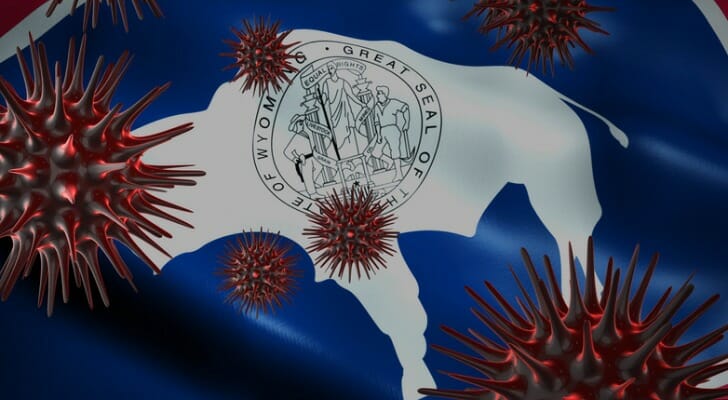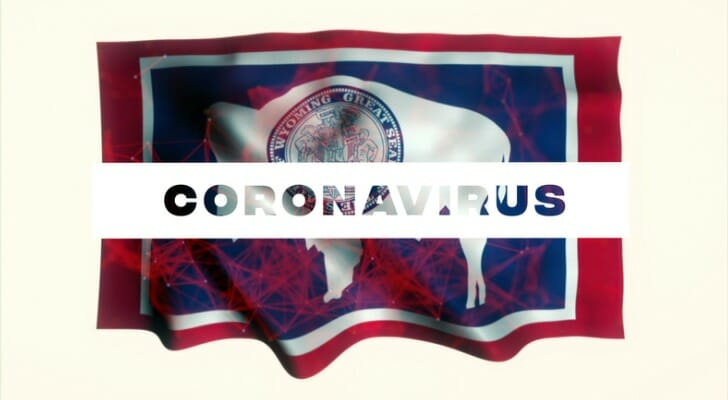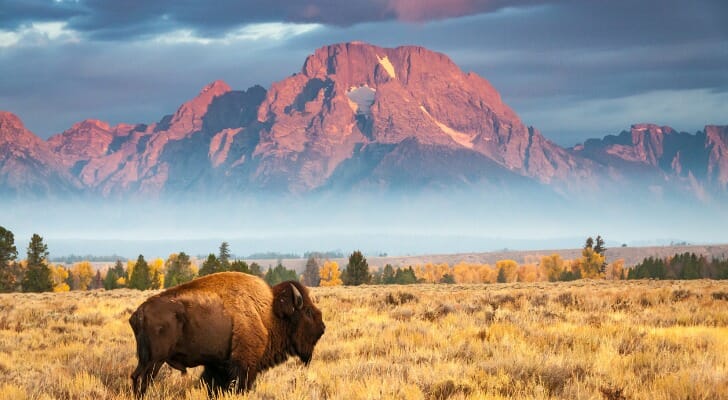The COVID-19 pandemic and accompanying economic crisis has impacted life everywhere, from major cities to small towns in the middle of the United States. The state of Wyoming has not been hit as hard as some other states, possibly owing to its small population and low population density, but the Cowboy State has still felt an impact to both individuals and businesses. The state government, in turn, has implemented measures to make life during this pandemic a bit easier. If you want to make it through this crisis financially healthy, consider speaking with a financial advisor.
Wyoming Coronavirus Relief for Individuals
Possibly due to Wyoming’s relatively low case count for COVID-19, there are not as many programs designed to help individuals through this crisis as in some other states. There are a few existing programs, though, that could absolutely help.
Unemployment Insurance
If you lose your job because of this crisis, you can file for unemployment with the state. This includes several new benefits created by the federal government end detailed below. Apply for unemployment here.
Healthcare
Medicaid and CHIP healthcare programs are still available for those who qualify. If you’ve lost your coverage and believe these programs may be right for you or your kids, apply here.
Wyoming Coronavirus Relief for Businesses

There are a few programs in Wyoming dedicated to helping small businesses deal with the current crisis.
Small Business Town Halls
The Wyoming Business Council is hosting a weekly small business virtual town hall to support small business owners in the state. You can see the schedule and sign up here.
Cheyenne Business Survey
If your business is in Cheyenne, you can fill out this survey and get mapped so that people will know if you are still open for curbside or digital business.
Federal Programs for Individuals
The federal government is also helping people impacted by the COVID-19 crisis. In March, the Coronavirus Aid, Relief and Economic Security (CARES) Act was enacted, which includes several programs designed to help individuals and families, notably the one sending personal stimulus checks to most Americans. This is means tested, meaning the amount of money each person gets is determined by the income reported on their last tax return.
An individual can get a check for up to $1,200 while married couples filing jointly are eligible for up to $2,400. That total is for individuals with income of less than $75,000 and married couples earning less than $150,000. The check total goes down as income goes up, cutting off at a total income of $99,000 for individuals and $198,000 for couples filing jointly. Many people have already gotten their checks, but some are still waiting.
The CARES Act also has help for people who have lost their job because of the crisis. This includes 39 weeks of unemployment, which is 13 more than is guaranteed in most states. There is also a $600 federal booster on all unemployment checks through July 2020 and sick leave provision for anyone who misses work because of the virus.
Federal Programs for Businesses
There are also federal programs designed to help businesses. One prominent program is the Paycheck Protection Program, which lets a business with less than 500 employees borrow up to 2.5 times their monthly payroll (minus any individual salary in excess of $100,000 annually(, with a cap of $10 million. The Small Business Administration guarantees PPP loans at 100%, and they are forgivable for the equivalent of eight weeks of payroll, mortgage interest, rent and utilities — so long as the firm’s full-time headcount and payroll stay the same as they averaged between February 15, 2019 and June 30, 2019 (or January 1, 2020 and February 15, 2020 if the business was founded this year.) The initial funding for PPP was used up quickly, but $310 more has been authorized. You can apply for a loan through a local PPP lender.
Economic Injury Disaster Loans (EIDLs) are also an option. These loans, administered by the SBA, are for up to $2 million and are available anywhere an economic disaster has been declared. The interest rate is 3.75% for businesses and 2.75% for nonprofits, with term of up to 30 years. The apportioned funds for these loans was also used up quickly, but more has been designated. Apply for a loan here.
Debt relief is automatic for anyone with an existing SBA loan. For six months the administration will cover all payments including principal, interest and fees. Check with your lender to see if your loan gets this relief.
Waiting for an EIDL to come through? Consider using an express bridge loan of up to $25,000 to hold you over. These loans are then paid back by the money from the EIDL.
Finally, you can still use existing programs for small business, including 7(a) loans, express loans, 504 loans, Community Advantage loans and microloans.
The Bottom Line

There aren’t a big number of programs to help people in Wyoming impacted by the COVID-19 crisis, but there are some, and federal programs can also help. Consider all your options if you need help.
Tips for Business Owners During the Coronavirus Crisis
- Many financial advisors specialize in working with business owners. Finding the right financial advisor that fits your needs doesn’t have to be hard. SmartAsset’s free tool matches you with financial advisors in your area in five minutes. If you’re ready to be matched with local advisors that will help you achieve your financial goals, .
- For a comprehensive list of the programs available to small businesses, check out our guide to coronavirus relief for small businesses.
Photo credit: ©iStock.com/Brian Evans, ©iStock.com/blackdovfx, ©iStock.com/Ahmed Zaggoudi
